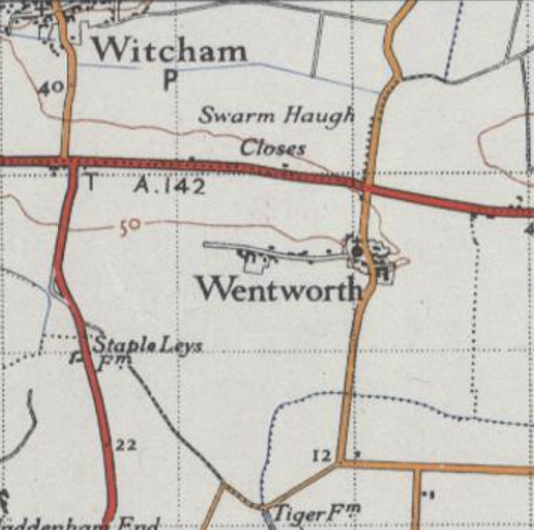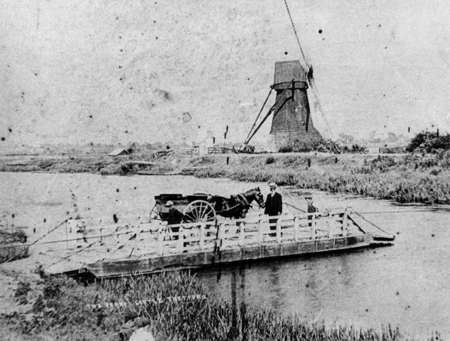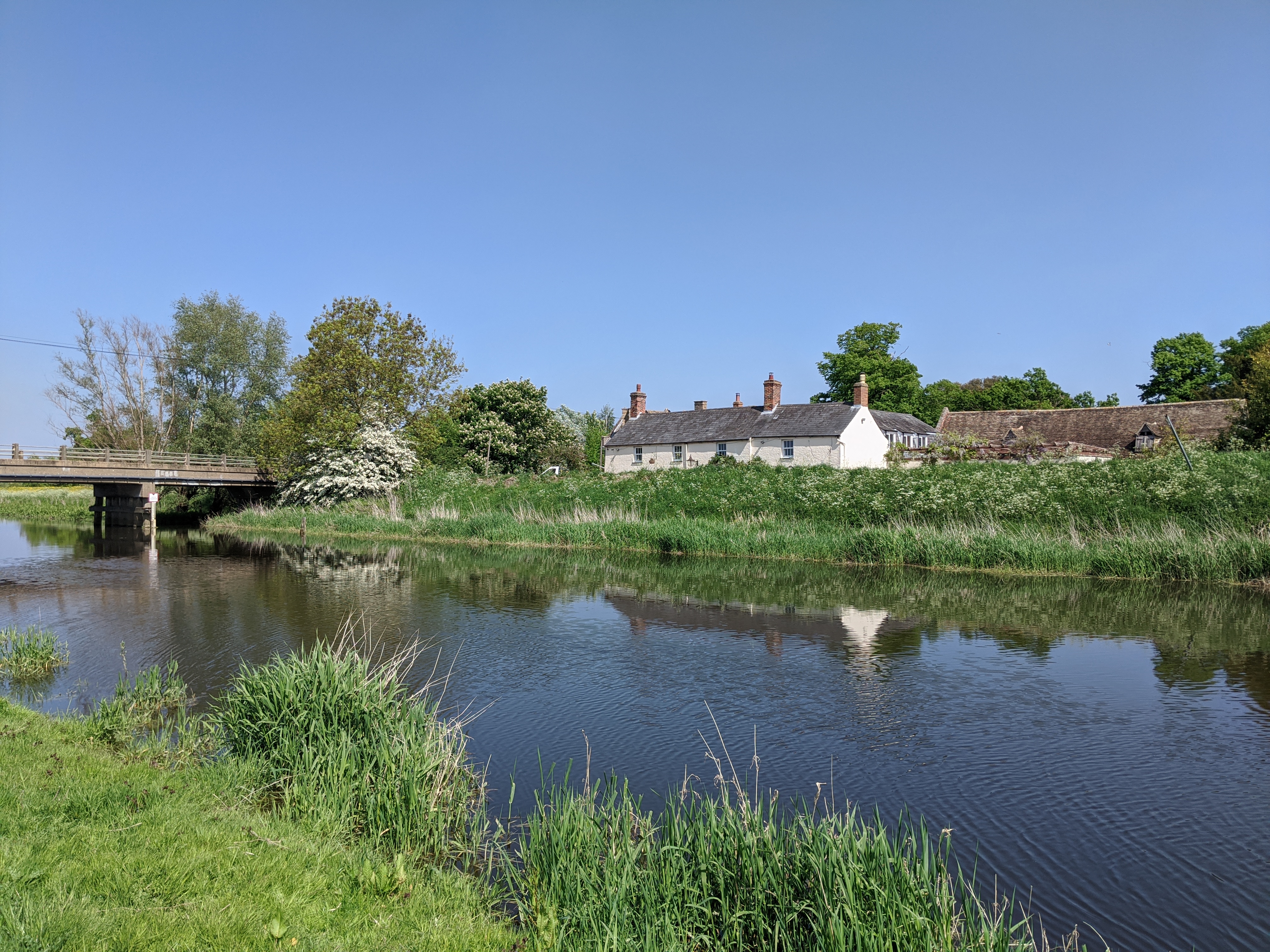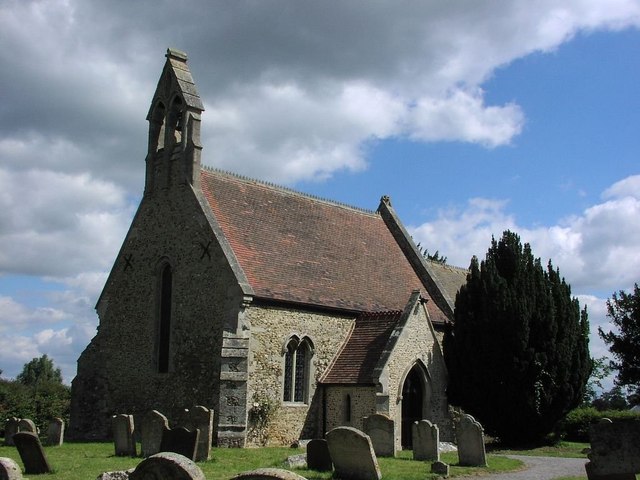|
Ely Rural District
Ely Rural District was a rural district in England from 1894 to 1974. It was named after Ely, but did not include the city itself, instead covering the rural area to the west and north of it. It formed part of the administrative county of the Isle of Ely from 1894 to 1965, when this was merged into Cambridgeshire and Isle of Ely. History The district had its origins in the Ely Poor Law Union, which had been created in 1836, covering Ely and several surrounding parishes. In 1872 sanitary districts were established, giving public health and local government responsibilities for rural areas to the existing boards of guardians of poor law unions. The Ely Rural Sanitary District therefore covered the area of the poor law union except for Ely itself, which already had a local board of health and so formed its own urban sanitary district. The Ely Rural Sanitary District was administered from Ely Union Workhouse, which had been built in 1837 on Cambridge Road in Ely. Under the Loca ... [...More Info...] [...Related Items...] OR: [Wikipedia] [Google] [Baidu] |
Rural District
Rural districts were a type of local government area – now superseded – established at the end of the 19th century in England, Wales, and Ireland for the administration of predominantly rural areas at a level lower than that of the Administrative county, administrative counties.__TOC__ England and Wales In England and Wales they were created in 1894 (by the Local Government Act 1894) along with Urban district (Great Britain and Ireland), urban districts. They replaced the earlier system of sanitary districts (themselves based on poor law unions, but not replacing them). Rural districts had elected rural district councils (RDCs), which inherited the functions of the earlier sanitary districts, but also had wider authority over matters such as local planning, council house, council housing, and playgrounds and cemeteries. Matters such as education and major roads were the responsibility of county councils. Until 1930 the rural district councillors were also poor law gu ... [...More Info...] [...Related Items...] OR: [Wikipedia] [Google] [Baidu] |
Coveney, Cambridgeshire
Coveney is a village northwest of Ely in Cambridgeshire. Coveney is on a small Fen 'island' rising to above sea level, some west from Ely city as the crow flies, but nearly twice that distance by the main road. The village is situated on a by-road which leaves the main Ely–Chatteris road at Wentworth crossroads, about south. This by-road, which has a branch to the hamlet of Wardy Hill, west of Coveney village, used to be the only metalled road into the parish. But the droves across Ely West Fen, by Frogs Abbey, to Downham Hythe, and from Wardy Hill to Witcham have recently been made up for wheeled traffic. The Church of England parish church of St Peter ad Vincula is a Grade I listed building. Several artefacts from the late Bronze Age The Bronze Age is a historic period, lasting approximately from 3300 BC to 1200 BC, characterized by the use of bronze, the presence of writing in some areas, and other early features of urban civilization. The Bronze Age is the ... [...More Info...] [...Related Items...] OR: [Wikipedia] [Google] [Baidu] |
11 Lynn Road, Ely
Eleven or 11 may refer to: *11 (number), the natural number following 10 and preceding 12 * one of the years 11 BC, AD 11, 1911, 2011, or any year ending in 11 Literature * ''Eleven'' (novel), a 2006 novel by British author David Llewellyn *''Eleven'', a 1970 collection of short stories by Patricia Highsmith *''Eleven'', a 2004 children's novel in The Winnie Years by Lauren Myracle *''Eleven'', a 2008 children's novel by Patricia Reilly Giff *''Eleven'', a short story by Sandra Cisneros Music *Eleven (band), an American rock band * Eleven: A Music Company, an Australian record label *Up to eleven, an idiom from popular culture, coined in the movie ''This Is Spinal Tap'' Albums * ''11'' (The Smithereens album), 1989 * ''11'' (Ua album), 1996 * ''11'' (Bryan Adams album), 2008 * ''11'' (Sault album), 2022 * ''Eleven'' (Harry Connick, Jr. album), 1992 * ''Eleven'' (22-Pistepirkko album), 1998 * ''Eleven'' (Sugarcult album), 1999 * ''Eleven'' (B'z album), 2000 * ''Eleven'' (Reamonn ... [...More Info...] [...Related Items...] OR: [Wikipedia] [Google] [Baidu] |
Witchford
Witchford is a village and civil parish about west of Ely, Cambridgeshire, England. The 2011 Census recorded the parish's population as 2,385. History Anglo-Saxon cemetery When the site of RAF Witchford was being cleared a bulldozer driver found an Anglo-Saxon pagan cemetery on the site. The bulldozer unearthed and crushed about 30 skeletons. Little archaeological work could be undertaken but some artefacts were recovered, which T. C. Lethbridge stated to be consistent with the period AD 450–650. More recent survey work has found Iron Age and Roman domestic and other remains. An Anglo-Saxon cemetery was not found at that time, leading to the conclusion that this was not the site of the lost village of Cratendune. Hundreds Two hundreds of the Isle of Ely, North Witchford and South Witchford, took their name from the place and had their meeting-place at Witchford. RAF Witchford RAF Witchford was a RAF Bomber Command station that was built in 1942 and closed and dismantle ... [...More Info...] [...Related Items...] OR: [Wikipedia] [Google] [Baidu] |
Witcham
Witcham is a small village near Ely in Cambridgeshire, England. The village is surrounded by fenland farms and has a village hall and a 13th-century church dedicated to St Martin. It has a pub called the White Horse, which was the winner of the Ely and District CAMRA Rural Pub of the Year Award 2006, 2010, 2011 and Overall Pub of the Year Award 2011. It also has a fine village green. The village hosts the World Pea Shooting Championships on the second Saturday in July every year and has staged the competition annually since 1971. Witcham is built around a cross-roads in the centre of the village with each of the four roads having housing on each side for 50-200m. The north-bound street is called "Martins Lane", the east-bound street is "High Street", south-bound is "The Slade", and west-bound is "Silver Street", which leads to the more recent housing developments of "Westway Place" and "The Orchards". The name of the village derives from "Wycham", meaning "place of the wych ... [...More Info...] [...Related Items...] OR: [Wikipedia] [Google] [Baidu] |
Wilburton
Wilburton is a small village of just over 1,000 inhabitants, situated in Cambridgeshire, England. It is 6 miles south west of Ely. While nominally an agricultural village, many of the inhabitants work in Cambridge, Ely or London. History Wilburton is a parish of around 800 acres lying on the important medieval route from Earith to Stretham, and extending south to the River Great Ouse. As much of the land in the region is fenland, the village's position on the ridge between Stretham and Haddenham at the southern end of the Isle of Ely was important in its growth and success. Listed as ''Wilburhtun'' in 970 and ''Wilbertone'' in the Domesday Book, the name "Wilburton" means "Farmstead or village of a woman called Wilburh". The village contains a number of old buildings, and was described in the 19th century as "very neat and contains some excellent houses". These include the Burystead (the former manor house, built c.1600), one of the few surviving half-timbered houses in the ... [...More Info...] [...Related Items...] OR: [Wikipedia] [Google] [Baidu] |
Wentworth, Cambridgeshire
Wentworth is a small village near Ely in Cambridgeshire, England. It is in the Isle of Ely, adjacent to Grunty Fen, Wentworth lies south of the A142 between Witchford and Sutton, approximately 5 miles west of Ely. The village is centred on St Peter’s Church and a number of listed buildings at the junction of Main Street and Church Road. Residents travel to nearby settlements, including Ely for many goods and services. In 2015, there was no public transport serving the village. However, as of 2017, there is a limited bus service and the nearest railway station serving the village is Ely. In the 1870s, Wentworth, Cambridgeshire was described as: " a parish in Ely district, Cambridge; 4½ miles W by S of Ely r. station. Post town, Ely. Acres, 1,437. Real property, £2,653. Pop., 180. Houses, 40. The living is a rectory in the diocese of Ely. Value, £450.* Patrons, the Dean and Chapter of Ely. The church is partly Norman, chiefly early English, and all good."It is thought the ... [...More Info...] [...Related Items...] OR: [Wikipedia] [Google] [Baidu] |
Little Thetford
Little Thetford is a small village in the civil parish of Thetford, south of Ely in Cambridgeshire, England, about by road from London. The village is built on a boulder clay island surrounded by flat fenland countryside, typical of settlements in this part of the East of England. During the Mesolithic era, the fenland basin was mostly dry and forested, although subject to salt and fresh water incursions. The marshes and meres of this fenland may therefore have been difficult to occupy, other than seasonally, but there is evidence of human settlement on the island since the late Neolithic Age; a Bronze Age causeway linked the village with the nearby Barway, to the south-east. An investigation, prior to a 1995 development in the village, discovered a farm and large tile-kiln of Romano-British origin; further investigations uncovered an earlier settlement of the Pre-Roman Iron Age. The Roman road Akeman Street passed through the north-west corner of the parish, and the lost 7 ... [...More Info...] [...Related Items...] OR: [Wikipedia] [Google] [Baidu] |
Sutton-in-the-Isle
Sutton or Sutton-in-the-Isle is village and civil parish in the county of Cambridgeshire in England, near the city of Ely. The "in-the-Isle" suffix refers to the fact that the village is part of the Isle of Ely, once an island in the Fens and also an administrative county until 1965. The village location on the high ground of the Isle of Ely provides commanding views across the surrounding low-lying fens. History The village was mentioned in the Domesday Book of 1086, identified as ''Sudtone''. There were then 9 sokemen, 8 villeins (each with 7.5 acres), 15 cotters and 7 serfs. In 1109, the charter 51 of Bishop Hervey included ''Suttune'' in the lands recorded as being conferred upon the Cathedral Priory of Ely. According to the Ely Diocesan Register, the Manor of Sutton was established in 1292 and belonged to the Priory. In 1312, Sutton was granted the right to hold a street market each Thursday; this was held on the wider part of the High Street, outside what is now the On ... [...More Info...] [...Related Items...] OR: [Wikipedia] [Google] [Baidu] |
Stretham
Stretham Locally, the is a glottal stop: or even is a village and civil parish south-south-west of Ely in Cambridgeshire, England, about by road from London. Its main attraction is Stretham Old Engine, a steam-powered pump used to drain the fens. The pump is still in use today although converted to electric power. It has open days throughout the year. History A Bronze Age hoard consisting of gold jewellery including a torque, bracelet, six ribbed-rings as well as a bronze rapier was discovered in Granta Fen near Stretham in 1850. Dating to between 1300 and 1000 BC, the torque is in the Hunt Museum in Limerick while the remainder of the treasure is in the British Museum. Stretham means ''homestead or village on the road'' (possibly Roman); Latin ''strata'' for paved road or old English ''ystrad'' for road plus old English ''ham'' for village. The route of the Roman road from Cambridge is uncertain beyond Waterbeach. Brythnoth (the first Abbot of the Benedictine monaster ... [...More Info...] [...Related Items...] OR: [Wikipedia] [Google] [Baidu] |
Mepal
Mepal is a village in Cambridgeshire, England. Mepal is part of the East Cambridgeshire district, and is located just north of the A142 road between Ely and Chatteris. History First recorded at the start of the 13th century Mepal's history has always been tied up with that of The Fens and the village is less than ten metres above sea level. One of the smaller villages of the Isle of Ely, Mepal lies at the western end of the Isle on what was once the shore between the fenland and the higher ground of the Isle.About Mepal The and the |
Littleport, Cambridgeshire
Littleport is a large village in East Cambridgeshire, in the Isle of Ely, Cambridgeshire, England. It lies about north-east of Ely and south-east of Welney, on the Bedford Level South section of the River Great Ouse, close to Burnt Fen and Mare Fen. There are two primary schools, Millfield Primary and Littleport Community, and a secondary, Littleport and East Cambridgeshire Academy. The Littleport riots of 1816 influenced the passage of the Vagrancy Act 1824. History With an Old English name of ''Litelport'', the village was worth 17,000 eels a year to the Abbots of Ely in 1086. The legendary founder of Littleport was King Canute. A fisherman gave the king shelter one night, after drunken monks had denied him hospitality. After punishing the monks, he made his host the mayor of a newly founded village. The Littleport Riots of 1816 broke out after war veterans from the Battle of Waterloo returned home, only to find they could get no work and grain prices had gone u ... [...More Info...] [...Related Items...] OR: [Wikipedia] [Google] [Baidu] |








